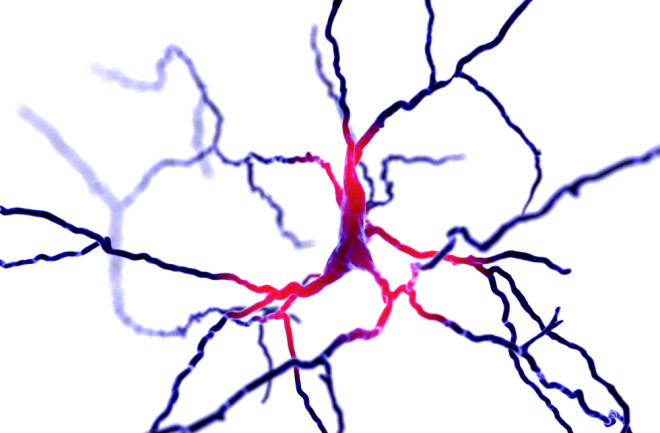A new paper claims to have solved a long-outstanding mystery in neuroscience – how, exactly, do the cells of people with Huntington’s disease produce damaging amyloid proteins from other proteins in a game of maladaptive Lego?
Amyloids accumulate in nerve cells, forming plaques that result in cell death and contribute to the progressive symptoms of Huntington’s. The disease that killed Woody Guthrie causes changes in mental state and problems with moving, speaking and breathing.
The new research comes from the lab of Randal Halfmann, a researcher at the Stowers Institute for Medical Research, a non-profit biomedical research organization. To investigate the protein Lego, the team used a new technique, Distributed Amphifluoric Förster Resonance Energy Transfer (DAmFRET), to track changes as they happened in single cells.
After some painstaking work, they came up with a surprisingly simple explanation for where amyloids come from.
The Gene Behind Huntington's Disease
Until now, the overall picture was relatively clear. People with Huntington’s Disease have a genetic mutation that encodes for a protein, Huntington, that contains far too many of the amino acid glutamine, a common building block for proteins. To develop Huntington’s, one must have at least 36 glutamine or more in a row, and having more tends to result in symptoms that advance more quickly.
This is the polyglutamine or “polyQ” segment, and it’s associated with nine different fatal diseases, with Huntington’s being the most common. Somehow polyQ makes the huntingtin protein “aggregation prone,” according to a 2021 paper, and more likely to form amyloids.
These proteins are, themselves, layered in sheets that appear to have come from some complex mechanism, an “amyloid nucleus.”
A Pivotal Protein Structure
Although an entire field has awaited its description, the amyloid nucleus has so far evaded identification because it’s fleeting, rare and unstable, according to a 2021 preprint paper. Even computer simulations are impossible, it says, because the structure is so uncommon and involves too many variables.
Using DAmFRET, which features a “direct intracellular reporter,” the researchers concluded that the nucleus was remarkably simple – a tiny, four-stranded shape – a quirk within a single protein molecule. But once formed, this nucleus kicks off the formation of amyloid fibers, which accumulate to form plaques.
“The emerging paradigm is that everything follows from a single event, a spontaneous change in protein shape,” says Halfmann in a press release. “That event ignites the chain reaction for amyloids that kill cells and may provide critical insight into how amyloids cause disease.”
Are There Treatments for Huntington's Disease?
The new paper points to a potential medical strategy – polyQ molecules don’t form nuclei when crowded together with other proteins. They need space to develop the structure, and a treatment may work by somehow getting in the way.
While there are many medications that can help to reduce the symptoms of Huntington’s, there are none yet available capable of stopping or slowing the disease itself. An investigational drug, pridopidine, hopes to resist the condition by stimulating the release of a regenerating chemical in the brain.
The new DAmFRET findings could also lead to discoveries in the areas of Alzheimer's disease and Parkinson’s disease, both of which are related to the accumulation of amyloids.
Read More: Alzheimer’s Disease Isn't the Only Cause of Dementia

